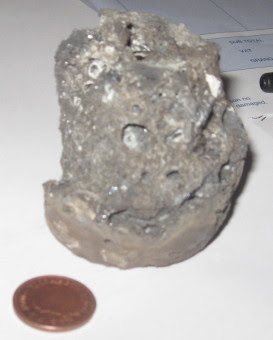Caution, while the voluminous jelly substance is most definitely Al(OH)3, the white substance you saw could be an impurity from the Aluminum foil as
it is commercial grade Al, which is anywhere from 92% to 99% pure, or some alpha Al2O3, formed in a hardening process, which is not soluble in acids
or bases.
On impurities, we have mentioned Silicon, some foils have Fe for added strength, at times Mn, but would anyone believe a small amount of Lead (Pb
maybe country specific due to manufacturing process) as a possible impurity? See article reference below (I hope I am misreading).
"The effect of lead impurity on the DC-etching behaviour of aluminum foil for electrolytic capacitor usage" by W. Lina, , G. C. Tua,
C. F. Linb and Y. M. Pengb
a Institute of Materials Science and Engineering, National Chiao Tung University, Hsinchu, Taiwan R.O.C., at Materials Research Laboratories,
Industrial Technology Research Institute, Hsinchu, Taiwan R.O.C.
Received 26 June 1995; revised 17 October 1995. Available online 16 February 1999.
"Abstract
The effects of lead impurity on the etched morphology of high purity aluminum foils for electrolytic capacitor
applications were investigated in this work. The lead impurity was either present in as-received aluminum foils or deposited purposely on the
foil surface through an immersion-reduction reaction. The amount and distribution of deposited lead varies with the lead content in as-received foil.
The as-received foil with higher lead content gave a higher concentration and a more uniform distribution of deposited lead."
... |


























 because:
because:






